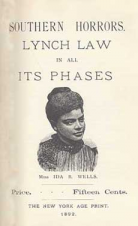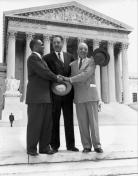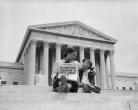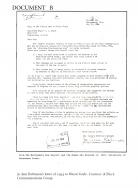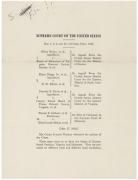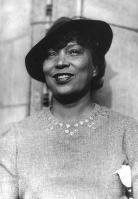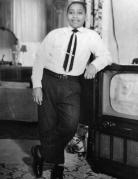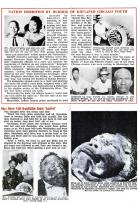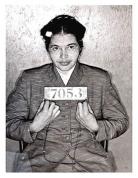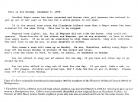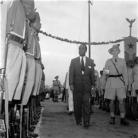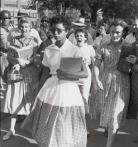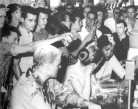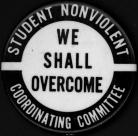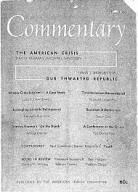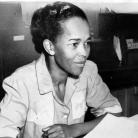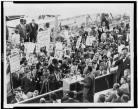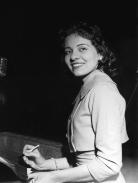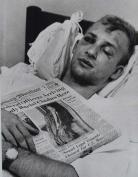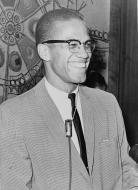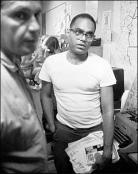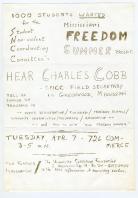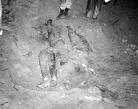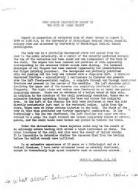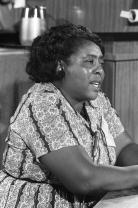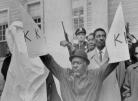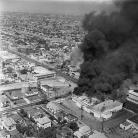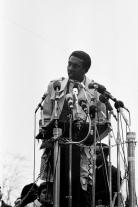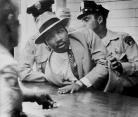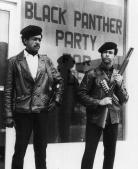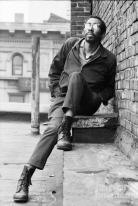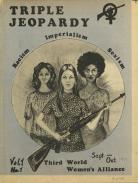Test Chronology: 00 Course Catalogue
Created by Jon Coburn on Thu, 06/06/2024 - 17:20
Part of Group:
Timeline documenting all significant events and primary materials explored on HST3107 The US Civil Rights Movement. Use the #HST3107 designation to discover these items in COVE when building your own maps and timelines.
Timeline
Chronological table
| Date | Event | Created by | Associated Places | |
|---|---|---|---|---|
| 1892 |
Ida B. Wells Publishes 'Southern Horrors: Lynch Law in All its Phases#HST3107 |
Jon Coburn | ||
| 12 Feb 1909 |
National Association for the Advancement of Colored People (NAACP) Forms, 1909#HST3107 |
Jon Coburn | ||
| 17 May 1954 |
Brown v. Board of Education Strikes Down Segregation in Schools, May 17, 1954#HST3107 On May 17, 1954, the Supreme Court of the United States of America, led by chief justice Earl Warren, decided that the doctrine of "separate but equal" was inherently unconstitutional. The decision struck down segregation of American schools and set the stage for desegregation of public facilities throughout the United States. This decision is marked as the beginning of the civil rights-era in "master narrative" readings of the movement's history. |
Jon Coburn | ||
| 18 May 1954 |
'News Editorials from Across the United States'#HST3107 The day after the Supreme Court decided the unconstitutionality of school segregation in Brown v Board of Education, newspaper across the United States and around the world reported their variable reactions to the prospect of desegregation. |
Jon Coburn | ||
| 21 May 1954 |
'Letter from Jo Ann Robinson to Montgomery Mayor W. A. Gayle, May 21st, 1954'#HST3107 On May 21st, 1954, Jo Ann Robinson wrote to Mayor W. A. Gayle in her capacity as leader of the Women's Political Council of Montgomery. Robinson politely requested a redress of grievances, but stopped short of asking for the complete desegregation of the bus system (despite the letter coming only days following Brown v Board of Education).
|
Jon Coburn | ||
| 2 Mar 1955 |
Claudette Colvin Arrested for Refusing to Give Up her Seat, Montgomery AL, March 2, 1955#HST3107 From Wikipedia: Claudette Colvin (born Claudette Austin; September 5, 1939)[1][2] is an American pioneer of the 1950s civil rights movement and retired nurse aide. On March 2, 1955, she was arrested at the age of 15 in Montgomery, Alabama, for refusing to give up her seat to a white woman on a crowded, segregated bus. It occurred nine months before the similar, more widely known incident in which Rosa Parks, secretary of the local chapter of the National Association for the Advancement of Colored People (NAACP), helped spark the 1955 Montgomery bus boycott. |
Jon Coburn | ||
| 31 May 1955 |
Brown v Board of Education II, May 31, 1955#HST3107 From Wikipedia: Brown v. Board of Education II (often called Brown II) was a Supreme Court case decided in 1955. The year before, the Supreme Court had decided Brown v. Board of Education, which made racial segregation in schools illegal.[1] However, many all-white schools in the United States had not followed this ruling and still had not integrated (allowed black children into) their schools. In Brown II, the Court ordered them to integrate their schools "with all deliberate speed."[ |
Jon Coburn | ||
| 11 Aug 1955 |
'Zora Neale Hurston, “Court Order Can't Make Races Mix,” Sentinel (Orlando), August 11, 1955'#HST3107
Responding to the proposed desegregation of American schools, Black writer and cultural critic Zora Neale Hurston offered a defense of Black schools and railed against the prospect of Black children being forced to learn within racist institutions. |
Jon Coburn | ||
| 28 Aug 1955 |
Lynching of Emmett Till, August 28, 1955#HST3017 |
Jon Coburn | ||
| 15 Sep 1955 |
JET Magazine Publishes Photographs of Emmett Till's Open Casket Funeral#HST3107 Mamie Till-Mobley asked that her son, Emmett Till, be given an open casket funeral on September 6, 1955, so the world could see what his murderers had done. On September 15, 1955, JET magazine featured an image of Emmett Till's open casket on its cover. The image drew revulsion towards the lynching from around the world. |
Jon Coburn | ||
| 23 Sep 1955 |
All-White Jury Acquits Murderers of Emmet TIll, September 23, 1955#HST3107 On September 23 the all-white, all-male jury (both women and blacks had been banned) acquitted both Milam and Bryant after a 67-minute deliberation; one juror said, "If we hadn't stopped to drink pop, it wouldn't have taken that long." |
Jon Coburn | ||
| 1 Dec 1955 |
Rosa Parks Arrested for Refusing to Give Up Her Bus Seat#HST3107 On December 1, 1955, in Montgomery, Alabama, Parks rejected bus driver James F. Blake's order to vacate a row of four seats in the "colored" section in favor of a white passenger, once the "white" section was filled. A police officer arrested her. Parks later said about being asked to move to the rear of the bus, "I thought of Emmett Till—a 14-year-old African American who was lynched in Mississippi in 1955, after being accused of offending a white woman in her family's grocery store, whose killers were tried and acquitted—and I just couldn't go back." |
Jon Coburn | ||
| 2 Dec 1955 |
'Jo Ann Robinson, "Leaflet calling for boycott," December 2nd, 1955'#HST3107
|
Jon Coburn | ||
| 5 Dec 1955 |
Martin Luther King, Jr. Addresses Montgomery Bus Boycotters, Holt Street Baptist Church#HST3107 At Holt Street Baptist Church, Rev Dr Martin Luther King Jr addresses a crowd of people following the first day of the Montgomery Bus Boycott |
Jon Coburn | ||
| 5 Dec 1955 to 20 Dec 1956 |
Montgomery Bus Boycott, 1955-1956#HST3107 The protest that brought Rosa Parks and Martin Luther King, Jr to public attention, the Montgomery Bus Boycott's successful demonstration of nonviolent resistance to segregation continues to be celebrated as the pinnacle of civil rights movement activism. |
Jon Coburn | ||
| 1956 |
'Interview with Store Maid, by Willie M. Lee'#HST3107 Journalist Willie M. Lee interviewed a number of the bus boycotters in Montgomery. In this piece, someone identified only as a "store maid" expressed their adoration of Martin Luther King, Jr. and their willingness to defend themselves, violently, against racist abuse. |
Jon Coburn | ||
| 12 Mar 1956 |
'The Southern Manifesto, March 12, 1956'#HST3107 In conjunction with the tactic of Massive Resistance, 'The Declaration of Constitutional Principles' (known informally as the Southern Manifesto) was drafted to support reversing the landmark Supreme Court 1954 ruling Brown v. Board of Education, which determined that segregation of public schools was unconstitutional. Written in February and March 1956, during the 84th United States Congress, the manifesto was signed by 19 US Senators and 82 Representatives from the Southern United States. The signatories included the entire congressional delegations from Alabama, Arkansas, Georgia, Louisiana, Mississippi, South Carolina, and Virginia, most of the members from Florida and North Carolina, and several members from Tennessee and Texas.
|
Jon Coburn | ||
| 6 Mar 1957 |
Ghana Declares Independence From Britain#HST3107 Ghana's independence had a powerful resonance across the Black Atlantic and especially in the United States. Many African American leaders traveled to Accra for the occasion, including Adam Clayton Powell and Martin Luther King, Jr. |
Jon Coburn | ||
| Sep 1957 |
Little Rock Crisis, 1957HST#3107 From Wikipedia: The Little Rock Nine were a group of nine African American students enrolled in Little Rock Central High School in 1957. Their enrollment was followed by the Little Rock Crisis, in which the students were initially prevented from entering the racially segregated school by Orval Faubus, the Governor of Arkansas. They then attended after the intervention of President Dwight D. Eisenhower. |
Jon Coburn | ||
| 1959 |
Robert F. Williams Drives the KKK out of Monroe, NC#HST3107 |
Jon Coburn | ||
| 1 Feb 1960 to 25 Jul 1960 |
Greensboro Lunch Counter Sit-Ins#HST3107 On February 1, 1960, four Black students from North Carolina Agricultural and Technical State University sat at the segregated "whites only" lunch counter of Woolworths in Greensboro, North Carolina, and demanded service. Refused by servers, they refused to leave, and the Greensboro Lunch Counter Sit-Ins began. After several months of nonviolent protest, the students experiencing escalating violence from White citizens, the lunch counters were segregated. In tandem with the Montgomery Bus Boycott, the sit-in movement demonstrated the power of nonviolent protest. |
Jon Coburn | ||
| 15 Apr 1960 to 17 Apr 1960 |
Student Nonviolent Coordinating Committee Founding Statement, 15-17 April 1960#HST3107 The Student Nonviolent Coordinating Committee (SNCC, pronounced /snɪk/ SNIK) was the principal channel of student commitment in the United States to the civil rights movement during the 1960s. |
Jon Coburn | ||
| Jun 1960 |
Ted Dientsfrey, “A Conference on the Sit-Ins”, Commentary, June 1960#HST3107
|
Jon Coburn | ||
| Jun 1960 |
Ella Baker, “Bigger than a Hamburger,” June 1960#HST3107
|
Jon Coburn | ||
| 6 Oct 1960 |
President Kwame Nkrumah Visits Harlem#HST3107 President Kwame Nkrumah of Ghana declared at a rally in Harlem yesterday afternoon that the 20,000,000 Americans of African ancestry constituted the "strongest link between the people of North America and the people of Africa." |
Jon Coburn | ||
| 1961 |
Diane Nash Recalls the Nashville Students’ Involvement in the Freedom Rides in 1961#HST3107 |
Jon Coburn | ||
| 1961 |
Assistant to Attorney General John Siegenthaler Recalls Events in Birmingham and Montgomery, Alabama in 1961#HST3107
|
Jon Coburn | ||
| 4 May 1961 to 10 Dec 1961 |
Freedom Rides, May-December 1961#HST3107 From Wikipedia: Freedom Riders were civil rights activists who rode interstate buses into the segregated Southern United States in 1961 and subsequent years to challenge the non-enforcement of the United States Supreme Court decisions Morgan v. Virginia (1946) and Boynton v. Virginia (1960), which ruled that segregated public buses were unconstitutional.[3] The Southern states had ignored the rulings and the federal government did nothing to enforce them. The first Freedom Ride left Washington, D.C., on May 4, 1961,[4] and was scheduled to arrive in New Orleans on May 17.[5] The Freedom Riders challenged this status quo by riding interstate buses in the South in mixed racial groups to challenge local laws or customs that enforced segregation in seating. The Freedom Rides, and the violent reactions they provoked, bolstered the credibility of the American Civil Rights Movement. They called national attention to the disregard for the federal law and the local violence used to enforce segregation in the southern United States. Police arrested riders for trespassing, unlawful assembly, violating state and local Jim Crow laws, and other alleged offenses, but often they first let white mobs attack them without intervention. The Congress of Racial Equality (CORE) sponsored most of the subsequent Freedom Rides, but some were also organized by the Student Nonviolent Coordinating Committee (SNCC). The Freedom Rides, beginning in 1961, followed dramatic sit-ins against segregated lunch counters conducted by students and youth throughout the South, and boycotts of retail establishments that maintained segregated facilities. The Supreme Court's decision in Boynton supported the right of interstate travelers to disregard local segregation ordinances. Southern local and state police considered the actions of the Freedom Riders to be criminal and arrested them in some locations. In some localities, such as Birmingham, Alabama, the police cooperated with Ku Klux Klan chapters and other white people opposing the actions, and allowed mobs to attack the riders. |
Jon Coburn | ||
| 10 Dec 1963 |
Malcolm X, “Message to the Grassroots”, 1963.#HST3107 |
Jon Coburn | ||
| 1964 |
Possible Role Playing Situations, Mississippi Freedom Summer Preparation, 1964#HST3107
|
Jon Coburn | ||
| 24 Apr 1964 |
Bob Moses, Address on the plans for Freedom Summer, Clubberly Auditorium at Stanford University's, April 24, 1964#HST3107
|
Jon Coburn | ||
| Jun 1964 to Aug 1964 |
Mississippi Freedom Summer, 1964#HST3107 From Wikipedia: Freedom Summer, also known as the Freedom Summer Project or the Mississippi Summer Project, was a volunteer campaign in the United States launched in June 1964 to attempt to register as many African-American voters as possible in Mississippi. Blacks had been restricted from voting since the turn of the century due to barriers to voter registration and other laws. The project also set up dozens of Freedom Schools, Freedom Houses, and community centers such as libraries, in small towns throughout Mississippi to aid the local Black population. The project was organized by the Council of Federated Organizations (COFO), a coalition of the Mississippi branches of the four major civil rights organizations (SNCC, CORE, NAACP, and SCLC). Most of the impetus, leadership, and financing for the Summer Project came from SNCC. Bob Moses, SNCC field secretary and co-director of COFO, directed the summer project |
Jon Coburn | ||
| 21 Jun 1964 |
Disappearance of Chaney, Goodman, and Schwerner#HST3107 Three civil rights workers - James Chaney, Andrew Goodman, and Micky Schwerner - disappeared without trace on the night of June 21st, 1964. |
Jon Coburn | ||
| 2 Jul 1964 |
The Civil Rights Act 1964#HST3107 Spearheaded by President Lyndon B. Johnson in the aftermath of his predecessor's assassination, the Civil Rights Act came into effect on July 2nd, 1964. |
Jon Coburn | ||
| Autumn 1964 |
SNCC's Waveland Retreat#HST3107 |
Jon Coburn | ||
| 4 Aug 1964 |
Murders of Chaney, Goodman, and Schwerner#HST3107 From Wikipedia: It took authorities weeks to fully investigate the disappearance of Chaney, Goodman, and Schwerner. On August 4th, 1964 - some 6 weeks after their disappearance - their bodies were recovered from an earthen damn in Meridian, Mississippi, after a tip off from an informant. |
Jon Coburn | ||
| 7 Aug 1964 |
Post Mortem Examination Report of the Body of James Chaney, 7 August 1964#HST3107 The autopsy for James Chaney recorded extensive injuries, attesting to the brutality of his murder during Mississippi Freedom Summer. |
Jon Coburn | ||
| 24 Aug 1964 to 27 Aug 1964 |
Democratic National Convention, Atlantic City#HST3107 The 1964 Democratic National Convention coronated President Lyndon Johnson as the party's candidate for the forthcoming presidential election, but was notorious for shunning the request of the Mississippi Freedom Democratic Party for redress of grievances. Framed by Fannie Lou Hamer's searing testimony of the racism she had experienced at the hands of the Mississippi Democratic Party. |
Jon Coburn | ||
| Nov 1964 |
Deacons for Defense and Justice Founded in Jonesboro, LA#HST3107 |
Jon Coburn | ||
| 20 Nov 1964 |
Horace Doyle Barnette's Confession to the FBI, 20 November 1964#HST3107 Under police questioning, participant in the Mississippi Burning murders Horace Dayle Barnette confessed his role, revealing the deliberate planning and brutal execution of three civil rights workers. |
Jon Coburn | ||
| 7 Mar 1965 to 25 Mar 1965 |
Selma to Montgomery MarchesKnown mostly for the police attacks on marchers on March 9th, 1965, the 54 mile Selma to Montgomery marches were organized by nonviolent activists to demonstrate the desire of African-American citizens to exercise their constitutional right to vote. |
Jon Coburn | ||
| 15 Mar 1965 |
President Johnson Throws Support Behind Voting Rights Act#HST3107 "...and we shall overcome." |
Jon Coburn | ||
| 6 Aug 1965 |
The Voting Rights Act 1965#HST3107 After the civil rights act, the voting rights campaign of SNCC experienced violence and death in Mississippi. Nonviolent marchers were beaten to death in Selma, Alabama. Catalysed by these efforts, President Johnson signed the Voting Rights Act into law on August 6th, 1965. |
Jon Coburn | ||
| 11 Aug 1965 to 16 Aug 1965 |
Watts Rebellion#HST3107 |
Jon Coburn | ||
| 5 Jun 1966 to 26 Jun 1966 |
March Against Fear#HST3107 |
Jon Coburn | ||
| 16 Jun 1966 |
Kwame Ture (Stokely Carmichael) Calls for Black Power#HST3107 |
Jon Coburn | ||
| Aug 1966 |
Martin Luther King, Jr, “Nonviolence: The Only Road to Freedom,” Ebony Magazine, August 1966#HST3107
|
Jon Coburn | ||
| Oct 1966 |
Black Panther Party founded in Oakland#HST3107 |
Jon Coburn | ||
| Nov 1966 |
Julius Lester, “The Angry Children of Malcolm X,” Sing Out! Oct/Nov 1966.#HST3107 |
Jon Coburn | ||
| 1968 |
Formation of the Third World Women's Alliance#HST3107 From Wikipedia: Initially, the TWWA was known as the Black Women's Liberation Committee (BWLC) and was created by black women within the Student Nonviolent Coordinating Committee (SNCC), including Frances Beal, in 1968.[4] The BWLC then became the Black Women's Alliance (BWA) when it became independent from SNCC. The BWA approached the problems that black women were facing with an intersectional lens. They focused on the fact that they experienced different oppression than black men because of their intersectional identity. The BWA found that other women of color, specifically Puerto Rican women, were experiencing this oppression, later coined "triple jeopardy." The BWA was finally transformed in 1970, and the Third World Women's Alliance was officially established. The Third World Women's Alliance (TWWA) was a revolutionary socialist organization for women of color active in the United States from 1968 to 1980. It aimed at ending capitalism, racism, imperialism, and sexism and was one of the earliest groups advocating for an intersectional approach to women's oppression. |
Jon Coburn |

